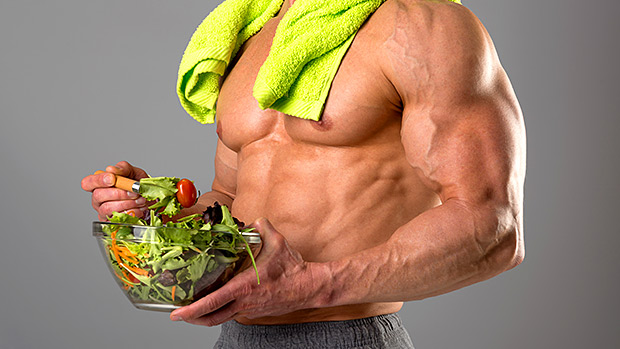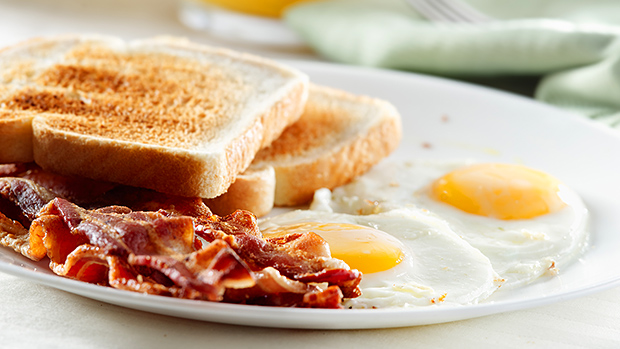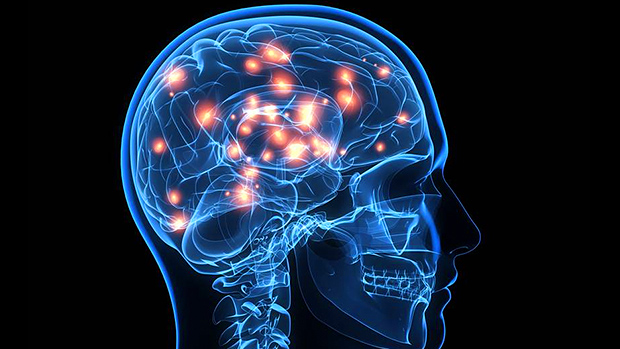Every diet that's ever worked in the history of mankind simply put the dieter in a caloric deficit... even if he or she didn't know it.
But instead of letting the diet dictate what people could eat, some savvy dieters realized they could still enjoy what they wanted and remain in a deficit. This is where "if it fits your macros" (IIFYM) or flexible dieting was born.
If calories are the primary focus, a dieter can lose fat as long as their daily food intake fits within their targeted macros. This flexible approach to dieting can prevent needless food restriction and improve consistency (1).
However, many experts have painted IIFYM as the gold standard of nutrition. And that may be true if you only care about fat loss. But to optimize health, performance, recovery, cognition, and muscle growth, macros alone won't do the trick.
For most people, macro optimization can be attained if they simply eat at least 0.8 grams per pound of protein daily and don't go too low on either fats or carbs. Any macro tweaking beyond that is mostly extraneous.
Once macros (protein, fat, and carbs) are mastered, it's all about managing micros (vitamins and minerals).
This means learning to fill your micronutrient deficiencies even if it requires spending less nutritional currency (calories) on Pop Tarts and Twinkies. Coaches often say to just take a multivitamin or to eat mostly whole foods and you'll be fine, but both these suggestions are garbage.
Multivitamins can do more harm than good. They're often overdosed with vitamins in forms we don't need and void of the ones we're commonly deficient in. They may also decrease anabolic signaling and many have risks not seen in whole foods (2,3,4,5).
Furthermore, many micronutrients compete with each other for absorption when in supplement form (6, 7). Long story short, multivitamins are at best a waste of cash and at worst detrimental.
But what about the other recommendation? You know, that "just eat mostly whole foods" thing. It sounds pretty good. But telling people to just eat mostly whole foods is pretty vague. It's a good start, but can still leave many deficiencies.
Even in advanced bodybuilders, eating a flexible macro-based diet or a strict meal plan can result in multiple nutritional deficiencies (8).
Based on this, you might think the only hope to optimize micros is to get blood tests to see where you're deficient, then start tracking every vitamin and mineral down to the milligram. But that's impractical and I'd rather run a marathon in a Speedo.
While we realistically can't track micros the same way we track macros, we could learn a thing or two about IIFYM's appeal. The strategy was successful because it gave the dieter freedom and flexibility while continuing to attain the primary goal – an energy deficit.
Well, you could apply the same concept to optimizing micros. It starts with the base meal.

By eating one meal specifically designed to fill a majority of your micro-nutritional needs, you can effortlessly take care of the rest in your remaining meals – assuming they're not utter junk – without having to micromanage (pun intended) endlessly. This base meal can be eaten at any time of day.
- The meal must contain at least one of the following protein sources: red meat, organ meat, eggs, fish, or shellfish. In other words, extremely nutrient-dense protein sources.
- The meal must contain an unsaturated fat from a whole-food source. Think avocados, olive oil, etc. This allows for optimal absorption of fat-soluble nutrients.
- The meal must contain at least two different vegetables, ideally differing in color for diversity in nutrients and polyphenols.
- One of the vegetables you choose must be a dark leafy green.
- The meal must contain salt somewhere. Iodized salt is preferable over pink salt. This will help prevent sodium and iodine deficiencies.
- The meal must contain at least five whole food sources. The diversity will enhance the spectrum of nutrients which will boost absorption along with cultivating good gut health (9).
- If the meal isn't collectively rich in iron, calcium, magnesium, zinc, and vitamin D, supplementing strategically is required (more details on this later). These are valuable nutrients that are commonly deficient in people, especially athletes with higher needs (10).
- If supplementing, avoid taking iron and zinc at the same meal due to conflicts of absorption. Ideally, you'd make sure at least one of these is covered appreciably via whole foods.
- If fish isn't selected and you don't eat it at least twice per week, omega-3 supplementation (on Amazon) must be included with the meal.
- Eat as much non-starchy vegetables as satiety allows. The more of these you eat, the more your micro-nutrition will be covered for the day.
- Determine the portions once your base meal's food choices have been selected. Here's how:
- Scale the protein source towards your protein target for that meal. For meathead lifters, this will be about 20-50 grams of protein. Allow grains, fruit, starchy vegetables, and/or fat sources to fill your remaining caloric allotment for that meal.

These vitamins and minerals have numerous overlapping benefits from testosterone production, bone density, muscle strength, immune function, enhanced recovery, improved body composition, and cardiovascular health.
Vitamin D is unique in that sunlight helps you produce more of it. Unfortunately, unless you're getting consistent exposure on large areas of the body, you're still likely deficient.
Even athletes training in the sun are at risk for deficiency (11). The benefits of Vitamin D expand far past the basic recommendation of 400-600iu per day (12). Your body can store tons of it and toxicity is only seen in astronomical doses (13). Getting 3000-10,000 IU daily is a good sweet spot to be in.
Unfortunately, no natural food contains a lot of Vitamin D. Fatty fish is the top source, but is still pretty mediocre. The American diet actually gets most of its Vitamin D from fortified foods, which still isn't that high for athletes who want to thrive (14).
Standard zinc recommendations are currently set at 11 mg for men and 8 mg for women, but newer research shows these to be underestimated. Plus, athletes need more due to sweating (15,16).
More optimal targets should be 15-20 mg for men and 10-14 mg for women. The upper range should be for more active individuals.
Oysters are the king of zinc, giving you about a week's worth of it in a serving or two. However, zinc has limited storage in the body, so you can't just load up on it. Furthermore, the only other foods with appreciable zinc doses are shellfish and red meat. Dark chicken and fish are a close second.
Essentially, you'd need to eat half a pound of nutrient-dense animal products daily to optimize zinc. If your base meal already lacks shellfish or red meat, supplementation is needed.
Iron recommendations are 8 mg for men and 18 mg for women (17). These recommendations also take bioavailability into account within an omnivorous diet and should be increased for vegans.
Heme iron from animal sources is much more bioavailable than what's found in plants, so keep that in mind if you have an iron deficiency. Adverse effects past the upper tolerable limit of 45 mg can occur acutely, so blood work would be the safest option to know if you're truly deficient.
Men eating a moderate amount of meat/seafood daily usually have nothing to worry about as they'll likely be within an optimal range.
Iron deficiency is common among physically active menstruating women. If you can't eat an appreciable amount of meat, seafood, fortified cereals, legumes, or leafy greens in combination within your base meal, supplementation is suggested. And you can be deficient even if you are eating enough of these foods.
For most women, a supplement of 18 mg or less should be sufficient without toxicity risk.
After factoring in sweat loss, daily needs for athletes are generally higher than normal recommendations of 320 mg for women and 400 mg for men (18). A good rule of thumb is to add 100-200 mg to the suggested number depending on your activity level.
These numbers also account for anti-nutrients which decrease magnesium absorption, found in certain whole grains, seeds, and plants. That being said, striving to consume more total magnesium in whole foods can't hurt since you'll pee, sweat, and excrete excess magnesium. However, it's possible to over-supplement with it, which may cause diarrhea.
Any upper limit only applies to supplements which might be needed if you don't eat enough dark chocolate, nuts, fatty fish, avocados, bananas, whole grains (sprouted bread is best), legumes, or leafy greens.
A good rule of thumb is to include at least two of the above foods in your base meal or eat a lot of whole foods throughout your day. If not, supplement with 100-300 mg of magnesium. Taking it before bed is the wisest choice since it has a calming affect and may even make you drowsy.
For magnesium supplements, the form matters. Magnesium aspartate, citrate, chloride, gluconate, or lactate are all viable choices. Avoid the commonly used magnesium oxide since it's so poorly absorbed (19).
Calcium recommendations are set at 1000 mg for men and 1200 mg for women (20). These recommendations are based on omnivorous diets in which you get calcium from both animal and plant sources.
That said, animal sources are significantly more bioavailable, especially dairy (21,22). If you don't consume dairy, bony fish like sardines, calcium-fortified food, or high calcium tofu in your base meal, you'll do well to supplement with your base meal.
The populations that are most commonly deficient are vegans, lactose intolerant individuals, and women, especially post menopause.
Take 500 mg in the form of calcium citrate (23). Your body can't absorb more than this in one sitting.
If you follow all the base meal rules, you'll have a truly nutrient-dense meal that maximizes absorption and minimizes the need for supplementation down to what's individually necessary. This optimizes physiology in a practical way. Eat one well-planned meal along with strategic supplementation and the rest of the day will take care of itself.
Hitting your macros is great, but it's for beginners. Truly thriving with your health and fitness is all about the micros.

- Linardon J et al. Rigid Dietary Control, Flexible Dietary Control, and Intuitive Eating: Evidence for Their Differential Relationship to Disordered Eating and Body Image Concerns. Eat Behav. 2017 Aug;26:16-22. PubMed.
- Guallar E et al. Enough Is Enough: Stop Wasting Money on Vitamin and Mineral Supplements. Ann Intern Med. 2013 Dec 17;159(12):850-1. PubMed.
- Vannucchi H. Interaction of Vitamins and Minerals. Arch Latinoam Nutr. 1991 Mar;41(1):9-18. PubMed.
- Dutra MT et al. The Effects of Strength Training Combined with Vitamin C and E Supplementation on Skeletal Muscle Mass and Strength: A Systematic Review and Meta-Analysis. J Sports Med (Hindawi Publ Corp). 2020 Jan 8;2020:3505209. PubMed.
- Della Guardia L et al. The Risks of Self-Made Diets: the Case of an Amateur Bodybuilder. J Int Soc Sports Nutr. 2015 Apr 1;12:16. PubMed.
- Sandstrom B. Micronutrient Interactions: Effects on Absorption and Bioavailability. Br J Nutr. 2001 May;85 Suppl 2:S181-5. PubMed.
- Yaradua I et al. Micro-Nutrients Interactions and Deficiencies: a Review. ResearchGate. 2018.
- Ismaeel A et al. A Comparison of the Nutrient Intakes of Macronutrient-Based Dieting and Strict Dieting Bodybuilders. Int J Sport Nutr Exerc Metab. 2018 Sep 1;28(5):502-508. PubMed.
- Heiman ML et al. A Healthy Gastrointestinal Microbiome Is Dependent on Dietary Diversity. Mol Metab. 2016 May;5(5):317–320. PMC.
- Kleiner SM et al. Nutritional Status of Nationally Ranked Elite Bodybuilders. Int J Sport Nutr. 1994 Mar;4(1):54-69. PubMed.
- Farrokhyar F et al. Prevalence of Vitamin D Inadequacy in Athletes: A Systematic-Review and Meta-Analysis. Sports Med. 2015 Mar;45(3):365-78. PubMed.
- Papadimitriou DT. The Big Vitamin D Mistake. J Prev Med Public Health. 2017 Jul;50(4):278-281. PubMed.
- Vieth R. Vitamin D Supplementation, 25-Hydroxyvitamin D Concentrations, and Safety. Am J Clin Nutr. 1999 May;69(5):842-56. PubMed.
- Office of Dietary Supplements - Vitamin D. NIH Office of Dietary Supplements. U.S. Department of Health and Human Services.
- Armah SM. Fractional Zinc Absorption for Men, Women, and Adolescents Is Overestimated in the Current Dietary Reference Intakes. J Nutr
. 2016 Jun;146(6):1276-80. PubMed. - Lukaski HC. Micronutrients (Magnesium, Zinc, and Copper): Are Mineral Supplements Needed for Athletes? Int J Sport Nutr. 1995 Jun;5 Suppl:S74-83. PubMed.
- Office of Dietary Supplements - Iron. NIH Office of Dietary Supplements. U.S. Department of Health and Human Services.
- Nielsen FH et al. Update on the Relationship Between Magnesium and Exercise. Magnes Res. 2006 Sep;19(3):180-9. PubMed.
- Walker AF et al. Mg Citrate Found More Bioavailable Than Other Mg Preparations in a Randomised, Double-Blind Study. Magnes Res. 2003 Sep;16(3):183-91. PubMed.
- "Office of Dietary Supplements - Calcium." NIH Office of Dietary Supplements, U.S. Department of Health and Human Services.
- Nutrition, Dairy. Recommendations for Calcium - a Nutrient of Concern. Dairy Nutrition. July 1, 2020.
- Straub DA. Calcium Supplementation in Clinical Practice: A Review of Forms, Doses, and Indications. Nutr Clin Pract. 2007 Jun;22(3):286-96. PubMed.





